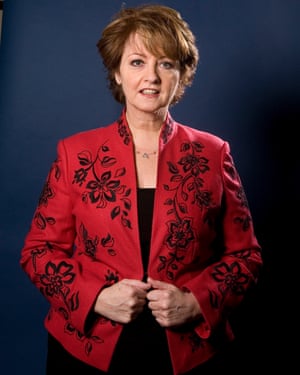I always confuse people who meet me. This is because even when I’m feeling awful, I look perfectly healthy. So as I sat across from my date I had to tell him the truth – even with the cameras rolling.
“I am actually dying. Slowly but surely. I’m fine about it. All it does is keep things in perspective.” Barry and I were on our first date but I had to be me, and that’s totally upfront.
I had first applied for Channel 4’s First Dates in summer 2015. At the time I was focused on getting on with my life, after being treated for breast cancer. Before starting treatment I’d had my eggs frozen, as I really wanted to have children one day. But three years later and aged 36, I still hadn’t met someone. I didn’t want to try online dating and I’m terrible at flirting. So I needed help.
I’d put the cancer behind me, which is why I didn’t mention it on the application form. But by the time First Dates called, in March 2016, scans had revealed that the cancer had returned in my bones. This time it was incurable.
I went through so many emotions, but my family and friends were brilliant. They just got on with it and gave me the ability to do the same.
When I got the call from the reality dating show, I didn’t want to lie about my situation. They were nothing but supportive, so in May 2016 I made it to the restaurant in London for my date.
The diagnosis isn’t who I am – it’s just something I have to live with
Telling Barry was much harder than I ever thought. Not because of all the cameras but because I hate getting attention from the diagnosis. But it wasn’t fair for him to find out I was terminally ill when the episode eventually aired. Plus, the diagnosis isn’t who I am – it’s just something I have to live with.
I waited until halfway through the meal to tell him. Barry was lovely and totally made me at ease, and he even wanted to see me again. Although I had a terrific date though, and Barry was a fantastic guy, I just didn’t fancy him.
While First Dates didn’t lead to love, it opened up an incredible opportunity to help other people like me.
After the episode aired, a producer put me in touch with Marie Curie. When the charity asked me to be involved in a project to help raise awareness about their work – providing care to people living with terminal illnesses – I knew this was something I wanted to do. I’m now volunteering as an expert voice for Marie Curie, sharing my experience and providing advice to help the charity.
I don’t focus on how much time I have left. The thing I do worry about is being in pain at the end. Like many people with a terminal illness, I don’t want to die in hospital. I’m not sure if I want go into a hospice or be cared for at home, but I think everyone should have the choice. That’s why I’m supporting Marie Curie – so more people can receive the support they need to spend their final days where they want to.
Earlier this month, I attended the launch of the charity’s Garden of Light to celebrate the start of the Great Daffodil Appeal. Seeing the installation of 2,100 daffodils – one for each of the Marie Curie nurses across the UK – at Paternoster Square in London was really special.
The hardest thing about my diagnosis is accepting that I’m never going be a mum. I feel lucky for the life I have had but also sad that it is going to end. I don’t feel ready for that.
I’m determined to make the most of every opportunity that comes my way. From travelling to Paris and drinking loads of wine to riding on the Greenpeace boat and hearing the choir sing at St Paul’s – and maybe even finding love –I still have so much I want to do.
- Annie Slater volunteers for Marie Curie, whose Great Daffodil Appeal runs until 31 March. Funds raised will help Marie Curie nurses care for people living with a terminal illness in their own homes and the charity’s hospices. Visit www.mariecurie.org.uk/daffodil or call 0800 304 7025 to find out more.
The day I made a difference is the Guardian Voluntary Sector Network’s series that showcases the work of people involved with charities. If you have a story to share about a landmark moment in your life, email voluntarysectornetwork@theguardian.com.
Talk to us on Twitter via @Gdnvoluntary and join our community for your free fortnightly Guardian Voluntary Sector newsletter, with analysis and opinion sent direct to you on the first and third Thursday of the month.
Declaring my cancer on First Dates has helped others | Annie Slater




